In an interference arrangement similar to Young's double-slit experiment, the slits S1 and S2 are illuminated with coherent microwave sources, each of frequency 106 Hz. The sources are synchronized to have zero phase difference. The slits are separated by a distance d=150.0m. The intensity I(θ) is measured as a function of θ, where θ is defined asa shown in fig. If I0 is hte maximum intensity, then I(θ) for 0≤θ≤90∘ is given by ltbrrgt 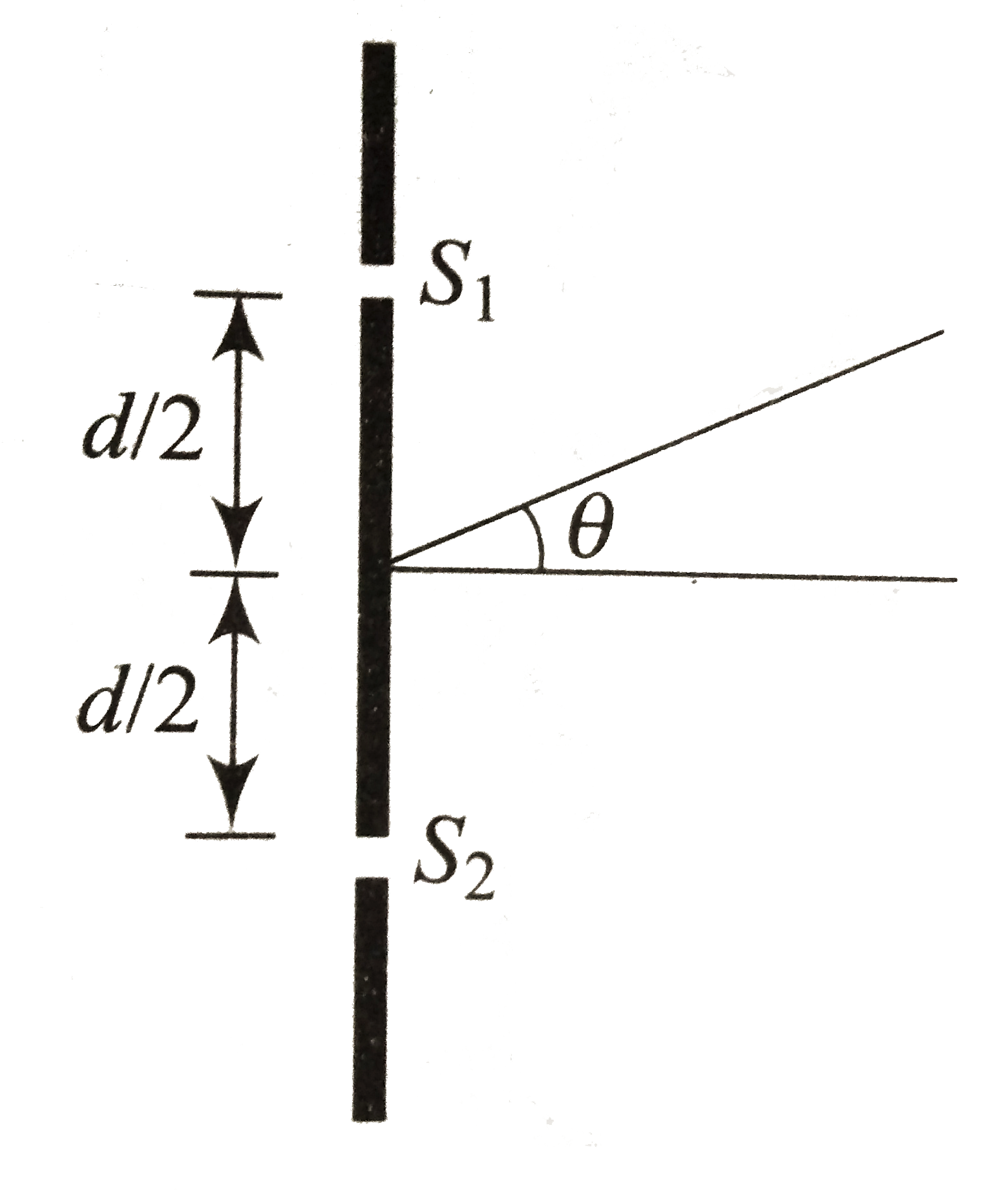
I(θ)=I0/2 for θ=30∘
I(θ)=I0/4 for θ=90∘
I(θ)=I0 for θ=0∘
I(θ) is constant for all value of θ
The correct Answer is:C
Step by step video solution for In an interference arrangement similar to Young's double-slit experiment, the slits S_(1) and S_(2) are illuminated with coherent microwave sources, each of frequency 10^(6) Hz. The sources are synchronized to have zero phase difference. The slits are separated by a distance d = 150.0m. The intensity I(theta) is measured as a function of theta, where theta is defined asa shown in fig. If I_(0) is hte maximum intensity, then I(theta) for 0 le theta le 90^(@) is given by ltbrrgt by Physics experts to help you in doubts & scoring excellent marks in Class 12 exams.
Updated on:21/07/2023Topper's Solved these Questions
- WAVE OPTICSBOOK - AAKASH SERIESCHAPTER - WAVE OPTICSEXERCISE - LECTURE SHEET (EXERCISE - I) (INTERFERENCE & YDSE) Level - II (ADVANCED) More than one correct answer type questions
4 Videos
- WAVE OPTICSBOOK - AAKASH SERIESCHAPTER - WAVE OPTICSEXERCISE - LECTURE SHEET (EXERCISE - I) (INTERFERENCE & YDSE) Level - II (ADVANCED) Linked Comprehension type questions
6 Videos
- WAVE OPTICSBOOK - AAKASH SERIESCHAPTER - WAVE OPTICSEXERCISE - PROBLEMS (LEVEL - II)
33 Videos
- WAVE MOTION AND SOUNDBOOK - AAKASH SERIESCHAPTER - WAVE MOTION AND SOUNDEXERCISE - PROBLEMS (LEVEL - II)
97 Videos
- WAVESBOOK - AAKASH SERIESCHAPTER - WAVESEXERCISE - EXERCISE-III (Doppler effect :)
15 Videos
Similar Questions
If the source of light used in a Young's Double Slit experiment is changed from red to blue, then
View SolutionLight of wavelengthλ=500nm falls on two narrow slits placed a distance d = 50×10−4 cm
apart, at an angle ϕ=30∘ relative to the slits as shown in figure. On the lower slit a transparent slab of thickness 0.1 mm and refractive index 32 is placed. The interference pattern is observed at a distance D=2m from the slits. Then, calculate
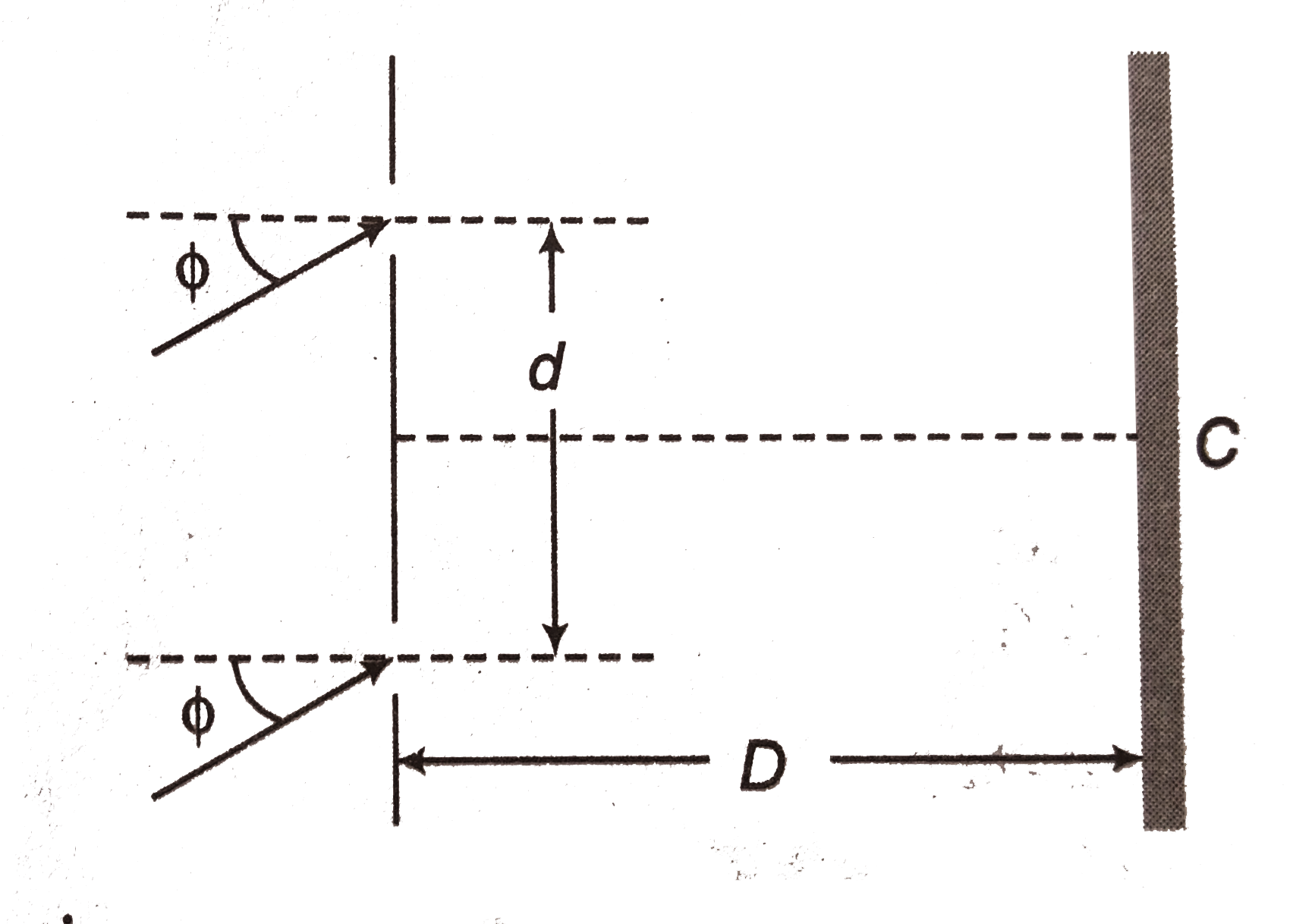
(a) position of the central maxima.
(b) the order of maxima at point C of screen .
(c)how many fringes will pass C, if we remove the transparent slab from the lower slit?
View SolutionIn Young's double-slit experiment, the y-coordinate of central maxima and 10th maxima are 2 cm and 5 cm, respectively, When the YDSE apparatus is immersed in a liquid of refractive index 1.5, the corresponding y-coordinates will be
View SolutionA wave is described by the equation y=(1.0mm)sinπ(x2.0cm−t0.01s).
(a) Find time period and wavelength.
(b) Find the speed of particle at x=1.0cm and time t=0.01s.
( c ) What are the speed of the partcle at x=3.0cm, 5.0cmand7.0cm at t=0.01s?
(d) What are the speeds of the partcle at x=1.0cm at t=0.011 , 0.012and0.013s?
View SolutionWhen a train is approaching the stationary observer, the apparent frequency of the whistle observed as 100 Hz, while when it has passed away from the observer with same speed, it is 50 Hz. Calculate the frequency of the whistle when the observer moves with the train V = 330 m/s)
View SolutionIn an interference arrangement similar to Young's double-slit experiment, the slits S_1 and S_2 are illuminated with coherent microwave sources, each of frequency 10^6 Hz. The sources are synchronized to have zero phase difference. The slits are separated by a distance d=150.0 m. The intensity I (theta) is measured as a function of theta, where theta is defined as shown. If I_0 is the maximum intensity, then I (theta) for 0lethetale90degree is given by
View SolutionIn an interference arrangement similar to double-slit experiment, S1 and S2 are illuminated with coherent source microwave source each of frequency 1 MHz. the sources are synchronized to have zero phase difference . This slits are separated by distance d=150.0m The intensity I(θ) is measured as a funciton of θ, where θ is defined as shown in figure. If I0 is maximum intensity, calculate I(θ)
For :
a. θ=0 b. θ=30∘
c. θ=90∘
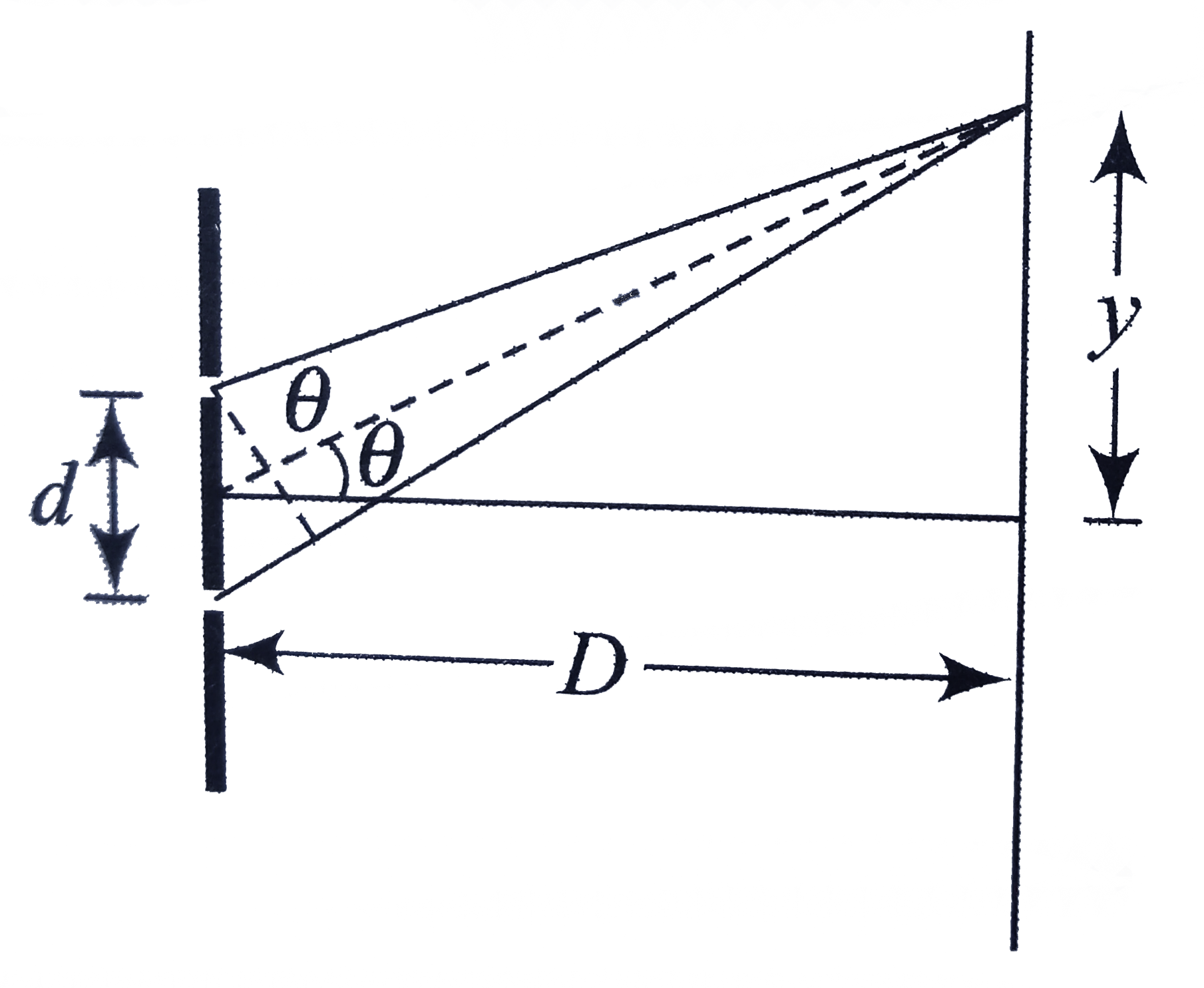
View SolutionIn a interference arrangement similar to Young's double-slit experiment ,the slits S_(1) and S_(2) are illuminated with coheremt microwave source ,each of frequencies 10^(6) Hz.The source are syhronized to have zero phase difference.The slits are separated by a distance from S_(1) and S_(2) where theta is defined as shown if I_(0) is the maximum intensity then
View Solution_E01_052_Q01.png)
In an interference arrangement similar to young's double slit experiment the slits S1 and S2 are illuminated with coherent microwave sources each of frequency 106Hz the sources are synchronized to have zero phase difference. the slits are separated by a distance d=150.0m. The intensity I(θ) is measured as a funtion of θ, where θ is defined as shown. if I0 is the maximum intensity then I(θ) for 0≤θ≤90∘ is given by:
View SolutionIn Young's double slit experiment, the slits are horizontal. The intensity at a point P as shown in figure is 34I0,where I0 is the maximum intensity.
Then the value of θ is,
(Given the distance between the two slits S1 and S2 is 2λ)

View SolutionConsider an interference arrangement similar to YDSE. Slits S1 and S2 are illuminated with coherent microwave sources each of frequency 2 MHz. The sources are synchronised to have zero phase difference. The slits are separated by distance d= 75m. The intensity I(θ) is measured as a function of θ where θ is defined as shown in figure. if I0 is maximum intensity then calculated I(θ) for (i)θ=0∘,(ii)θ=π/6and(iii)θ=π/2
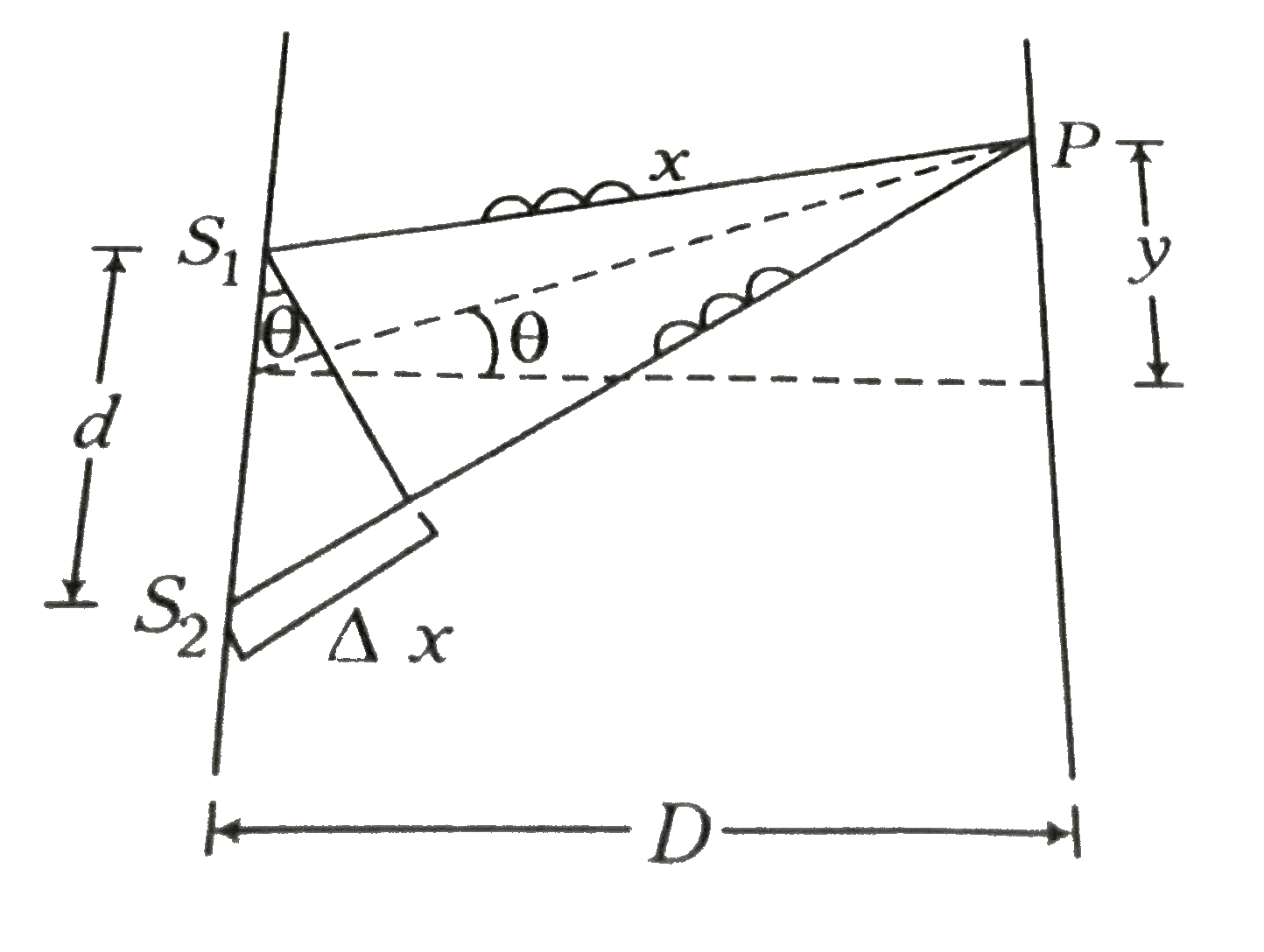
View Solutionयंग के द्वि - स्लिट प्रयोग के समान ही एक व्यतिकरण व्यवस्था में स्लिटें S1 तथा S2,106 हर्ट्ज की आवृत्ति वाले दो कला सम्बद्ध सूक्ष्म तरंग स्रोतों द्वारा प्रकाशित की जाती हैं | स्रोतों को एक साथ इस प्रकार व्यवस्थित किया गया है, कि उनमें कालांतर शून्य हो | स्लिटों के बीच की दूरी d=150.0 मी है | तीव्रता I(θ),θ के फलन के रूप में मापी गई है, जहाँ θ चित्रानुसार परिभाषित है | यदि अधिकतम तीव्रता I0 है, तब I(θ) का मान 0≤θ≤90∘ के लिए होगा

View SolutionIn an interference arrangement similar to Young's double slit experiment. The slits S1 and S2 are illuminated with coherent microwave sources, each of frequency 106Hz. The source are synchronized to have zero phase difference and the slits are separated by a distance d = 150.0 m. The intensity I(θ) is measured at a large distance as a function of θ, where θ is defined as shown. If I0 is the maximum intensity, the (θ) for 0≤θ≤90∘ is given by
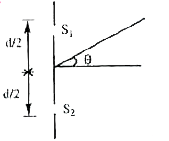
View Solutionयंग के द्विस्लिट प्रयोग के समान ही एक व्यतिकरण व्यवस्था में स्लिटें S1 तथा S2 , 106 हर्ट्ज आवृत्ति वाले दो कला सम्बद्ध सूक्ष्म तरंग स्रोतों द्वारा प्रकाशित की जाती हैं। स्रोतों को एक साथ इस प्रकार व्यवस्थित किया गया है, कि उनमें कलान्तर शून्य हो। स्लिटों के बीच की दूरी d= 150 मी है, तीव्रता I(θ),θ के फलन के रूप में मापी गई है, जहाँ θ चित्रानुसार परिभाषित है। यदि अधिकतम तीव्रता I0 है, तब I(θ) का मान 0≤θ≤90∘ के लिए होगा

View Solutionदो तरंगों के अध्यारोपण द्वारा एक कंपन कण का परिणामी आयाम y1=asin(ωt+π3) और y2=asinωt है:
View SolutionIn an interference arrangement similar to Young.s double - slit experiment , the slits S_(1) ans S_(2) are illuminated with coherent microwave sources . Each of frequency 10^(6) Hz . The sources are synchronized to have zero phase difference and the slits are separated by a distance d = 150.0 m . The intensity I(theta) is measured at a large distance as a function of theta , where theta is defined as shown . If I_(0) is the maximum intensity , then (theta) for 0 le theta le 90^(@) is given by
View Solution

